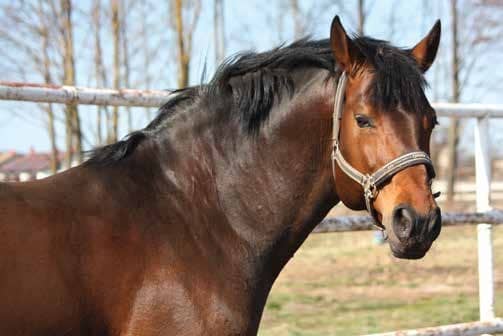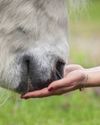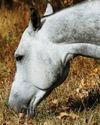Denemek ALTIN - Özgür
Equine Cushing's Disease
HQ magazine
|March/April 2020
A pituitary problem
-

The disease most commonly occurs in middle-aged and geriatric horses and ponies, with an average age of approximately 20 years at the time of diagnosis. Ponies are more commonly affected than horses, but there is no difference in the prevalence in mares or geldings. Current estimates suggest that between 20 and 33% of all horses and ponies develop PPID by the age of 20 (kentucky Equine Research Center). This makes PPID the most common endocrine condition of horses worldwide. Without treatment, symptoms get worse over time, and many horses are euthanized because of laminitis.

WHAT CAUSES THE CONDITION?
In dogs and humans, Cushing’s disease is caused by a hormone-secreting tumour in the front part (pars distalis) of the pituitary gland, which is found at the base of the brain. In horses, on the other hand, the disease involves the intermediate part of the pituitary gland (pars intermedia). This part of the gland is comprised of different hormone-secreting cells than the front part of the pituitary gland. Therefore, equine Cushing’s disease looks quite different to Cushing’s disease in dogs and humans. It is for this reason that many vets now prefer to refer to the condition in horses as PPID.

Bu hikaye HQ magazine dergisinin March/April 2020 baskısından alınmıştır.
Binlerce özenle seçilmiş premium hikayeye ve 9.000'den fazla dergi ve gazeteye erişmek için Magzter GOLD'a abone olun.
Zaten abone misiniz? Oturum aç
HQ magazine'den DAHA FAZLA HİKAYE

HQ magazine
The Science Behind Tapering
The science behind tapering
5 mins
Issue 155

HQ magazine
Horse Treats
The ultimate guide
5 mins
Issue 155

HQ magazine
Horsey Hair Care
Tips and tricks for a healthy mane and tail
5 mins
Issue 155

HQ magazine
Horsey Hydration- The Importance Of Water In Winter
The importance of water in winter
4 mins
Issue 155

HQ magazine
A Horseback Safari
Abelana Game Reserve
6 mins
Issue 155

HQ magazine
The Psychology Of Riding Performance
Intrinsic motivation, part 7
7 mins
Issue 155

HQ magazine
10 Best Life Lessons From Horses
Life lessons from our horses
4 mins
Issue 155

HQ magazine
Breaking New Ground
The evolution of the Callaho Online Auction
5 mins
Issue 155

HQ magazine
Horse Psychology 101
Part 3: The horse's cognitive abilities
9 mins
Issue 155

HQ magazine
Colic Part 1
An owner’s worst nightmare
7 mins
Issue 155
Translate
Change font size

